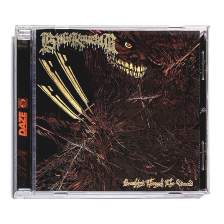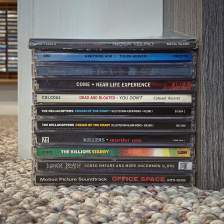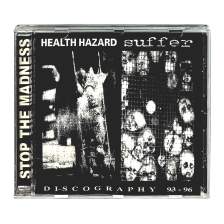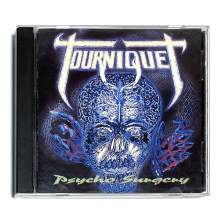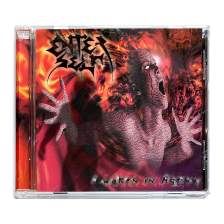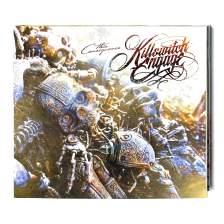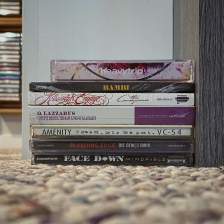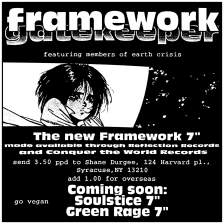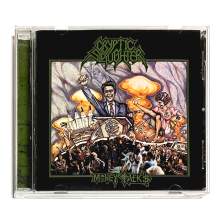
The ominously droning "Kokoro" comes from the forthcoming self-released EP Memento Mori—recorded entirely using human bones (or human breath passing through them)—from Adel Souto's 156 project. Keep an eye on the 156 Bandcamp page and/or adelsouto.com for future ordering information.
In the meantime, Adel of course has much more of value to say than I, so here's "Kokoro," followed by a brief interview with the man himself...
How and when did you settle upon the concept of recording an EP entirely using human bones, and—perhaps more importantly—how does one even begin to procure access to such instruments?
A handful of morbid friends had actually been collecting human bones—skulls, femurs, vertebrae. In handling them, the thought just came to me. Since most bones can only be used to strike objects, over making sound themselves, I thought it a perfect fit for 156. I then began to play with the idea of first using them in my music along with what I normally use (metal, glass, and concrete), but then it developed into using nothing but the bones, or the human breath passing through them. Other than my friends' assortments, I purchased a few myself so as to stop the constant borrowing—the largest I now have being a complete pelvis. Later, I saved up to buy a Tibetan kangling, which turned out to be the most expensive of the bunch. It took quite a long time until I could get my hands on an authentic one, as most for sale are actually yak bone. Believe it or not, all the material is openly and easily available to buy on the internet, including the most popular bidding sites.
When I began to curate this release and the recordings, I had thought of Zero Kama's 1991 LP, The Secret Eye of L.A.Y.L.A.H., though they were not a main influence. While they made several instruments out of human bones, they used them only in part, while I strictly used bones alone, and did so throughout.
Recording for Memento Mori began in 2012, and the EP was originally slated for release in late-2014. What were some of the challenges and setbacks in seeing this project through?
The main recording sessions ran from late-2012 through late-2014, mostly due to the scarcity of what I needed, as well as the back and forth of borrowing the equipment—not to mention that some of the early recording sessions were unusable. Next, the kangling was the most difficult to operate, because I thought simple appliance would be enough. I didn't know you need to learn how to properly play it, and that itself took some time. By early-2015, I finished all the overdubs and effects I felt filled in the—pardon the pun—pretty bare bones sound of simple clacking. Then came the final editing, considering which tracks to include, and even the design and layout. However, one thing that also held me up was the label that was to help cooperatively put it out—they disappeared on me, and I had to do all the research and production myself. That took more time, seeing as I hadn't put out a vinyl release in over a decade. Lastly, with the number of other projects I was involved in, it all took more time than I thought it would.
"Kokoro" is almost hypnotically repetitive, which seems like it could tie-in nicely to the ritualistic components of the EP. You've documented your participation in a number of personal rituals over the years, so how would you categorize or explain the ritualistic intent of the Memento Mori sessions?
Much of 156 has an industrial drum circle type of sound, similar to Crash Worship or early Neubauten, and that tends to already be ritualistically hypnotic. When adding the fact that nothing but human bones were used, it certainly adds to that, but there were a lot of larger concepts behind it as well.
The original title wasn't supposed to be Memento Mori. By the time the recordings were nearly done, I had used the sessions' name so much it stuck as the record's title. Originally, I called the sessions such, as the end result is meant to be the object used in a reflection on mortality in the practice of memento mori. The theory and custom, which is now mostly used in Masonic lodges and chivalric orders, stems from the Renaissance discipline of "ars moriendi" ("the art of dying"), and was inspired by Plato's dialog Phaedo, as well as letters by Seneca in the instruction to arbitrate on death. While the Buddhists have been doing it for over a thousand years (hence their use of the kangling), for the last few centuries Europeans have been employing skulls in the ritual practice where they sit in a candlelit room, stare, and meditate on things like the limits of time, earthly vanity, dying well, but also living a good and just life. 156's Memento Mori EP is meant to be an audial replacement of the skull normally used, for those who cannot afford one or prefer sound to sight when in contemplation.

